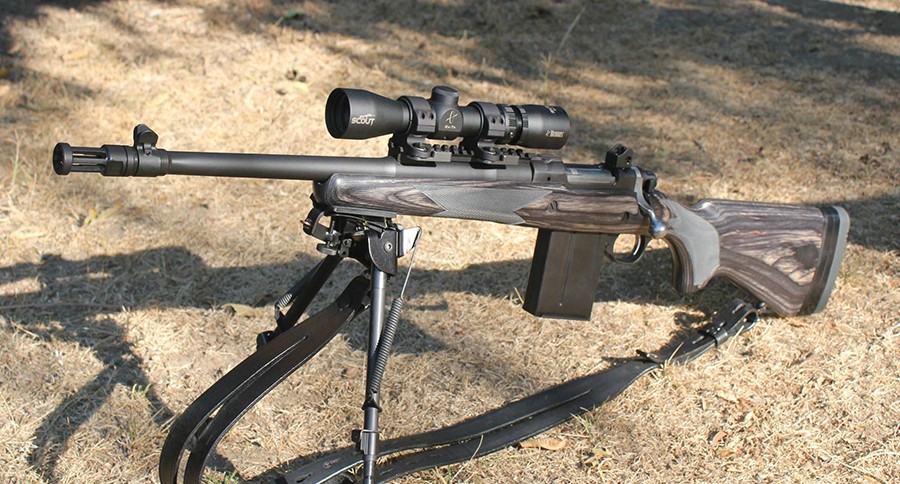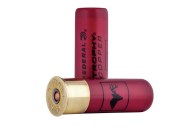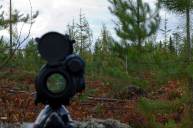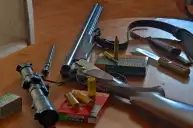Bore sighting a rifle helps you achieve the one-two punch of shooting and actually being on target. Here's how to do it.
Bore sighting a rifle is important for those of us who shoot for a living, hunt, or just plink for fun. Knowing that your crosshairs and ammo are aligned at the exact same spot not only makes us extremely confident, but it increases our success rate as well.
Finding the center of the target in a rifle scope is one thing, but seeing the result of a successful shot is quite another. We all want our point of impact to be the bullseye whether our firearm is locked in a gun vise, or steady in our own hands, and the best sighting system that we have is our very own eyes.
From the first shot to the last, whether we are shooting semi-autos or lever-actions, we want to be on target. Bore sighting is the very beginning of the process.
Even if it's a brand new firearm, it's not always going to hit the bullseye on its own without some adjustments to the scope or sights. Let's go over the bore sighting process.
The Eyes Have It
Since lever-action rifles are popular, but not as much as bolt-action rifles are, we'll start with the more common type. It's usually a simple matter to remove the bolt of your rifle, and it's essential to the bore sighting process.
You should take the obvious precaution of making sure there is no attached magazine or any rounds in an internal mag, so that you can physically see down the bore and out of the barrel of the rifle.
Some refer to this as the poor man's method of bore sighting, but it's arguably where most of us started and it works quite well.
The best case scenario is to have your firearm locked into position, such as in a gun vise, to have the least amount of movement. If you don't have a vise, it's easy enough to use sandbags, a benchrest, or even a pillow at the butt to keep it steady while you work.
Use a target set at around 25 yards, with an orange center dot that stands out well. Do your best to prevent the gun from moving from this point forward.
Peer through the barrel from behind and shift the gun's aimed direction until you can clearly see the center of the target.
Once you have the bore lined up by eye as best you can, it's imperative that the gun is held still. Then look through the scope and adjust the elevation and windage so that the scope's reticle is lined up with the center of the target as well.
It should be a fairly simple process to put the crosshairs right onto the target, as long as your rifle has held steady while you were working.
Now you are ready to take the first shot. Different ammunition can make subtle differences in your target shooting, but you should still be relatively close to the center of the 25-yard target. Continue to make more minor adjustments to finish zeroing your rifle in.
Every rifle and scope combination is different, but here's a quick tip: If your shot is about one inch below the bullseye at 25 yards, you'll be almost right on at 100 yards.
Laser In-Bore or In-Barrel Sighter
Our eyes are great and that unassisted method is the oldest, most common way to do it, but modern technology and specialized equipment has made the sighting process even easier.
One of the most basic types of new age bore sighting systems is the indicating laser.
These gadgets project a battery powered laser beam from an arbor or spud inserted into your muzzle. Some are manufactured to have the same dimension of a specific cartridge case, and you simply insert them into your gun's chamber and then close the action.
Laser bore sighters require a more solid hold or a gun vice to more easily center the scope's crosshairs onto the laser's dot where it reaches the proposed target. Laser bore sights that insert into the end of the barrel often have multiple sizes of bore adapters. Make sure you have a snug fit before zeroing in.
Now it is only a matter of dialing in the scope to center the reticle on the laser dot.
The same goes for an in-chamber laser. They come in various models to reflect bore size and can even be purchased with arbors to make one laser fit inside of multiple rifles of different calibers. They must be caliber-specific and made to the same dimensions and specifications as a cartridge of the caliber firearm that you are attempting to bore sight.
Line up the beam onto your target, then look through the optic and adjust the elevation and windage settings until they line up with the laser dot. The big advantages here are that you aren't relying on solely your eyes, and it's not nearly as imperative to hold the firearm still.
Unfortunately, it still isn't a perfect process. A laser bore sight, even a newer one, can get damaged and indicate a less-than-perfect straight line. Roll an in-chamber bore sighter on a flat surface with the laser on. If the dot fluctuates from a straight line, the diode might be canted and may not give you a completely accurate zero.
Magnetic Bore Sight
Now, some gun owners prefer never inserting anything into the muzzle end of their firearm. It could potentially do harm to the barrel or the crown, and it would certainly be catastrophic if you forgot that a bore sight was inserted, and fired the weapon.
That's where a magnetic bore sight can be a benefit.
Certain types of magnetic bore sighters attach to the end of the gun barrel by means of a magnetic strip, and will ultimately align with the optical bell of the riflescope.
Using the magnet on the bore sight, attach it to the end of the barrel. The lens on the device should be at roughly the same height as the bell of the scope.
Read the instructions carefully, but know that it's usually easier than it seems. You'll typically measure from the top of the barrel to approximately the center of the scope, and then use the same measurement to get the bore sighter in line with the scope.
Look through the scope and find the crosshairs or grid in the bore sighter, and adjust the scope crosshairs so that they point at the center of the grid.
You should now be close enough to center to start shooting live ammunition at a 25-yard target.
Important Reminders
Remember that no bore sighter is going to give you a precisely zeroed-in rifle on its own. You need to do that yourself out own the range. What bore sighting is best for is getting your firearm as close to zero as possible, and to prevent wasted time and ammo.
One key aspect to sighting in your rifle is the mount of the scope itself. It must be done properly to insure it's level and to encourage safety and accuracy.
Many of us would prefer to have a gunsmith do the process for them. Many gun shops will offer free bore sighting with the purchase and mounting of a new scope. All you need to do is ask.
Safe shooting and good luck zeroing-in!
Looking for a little more? Follow my webpage, or on Facebook and Twitter.
NEXT: HOW TO TEACH A KID TO SHOOT A GUN
WATCH




